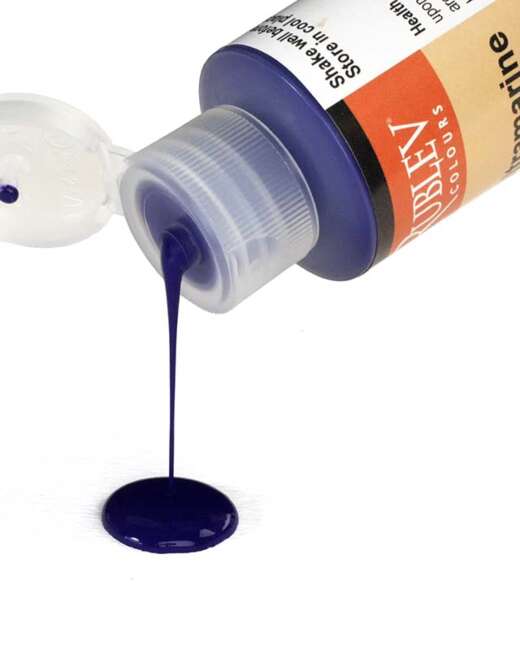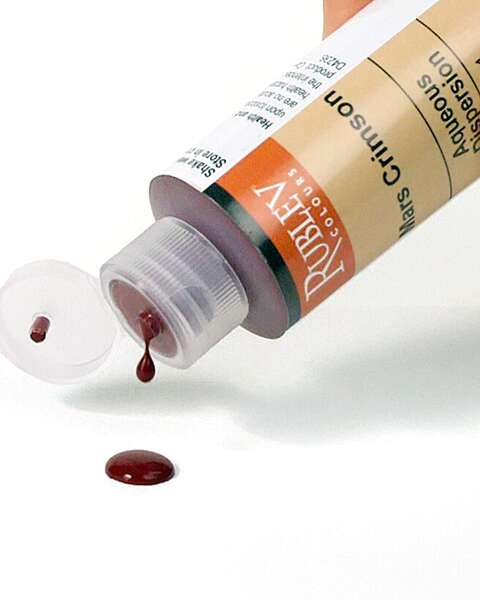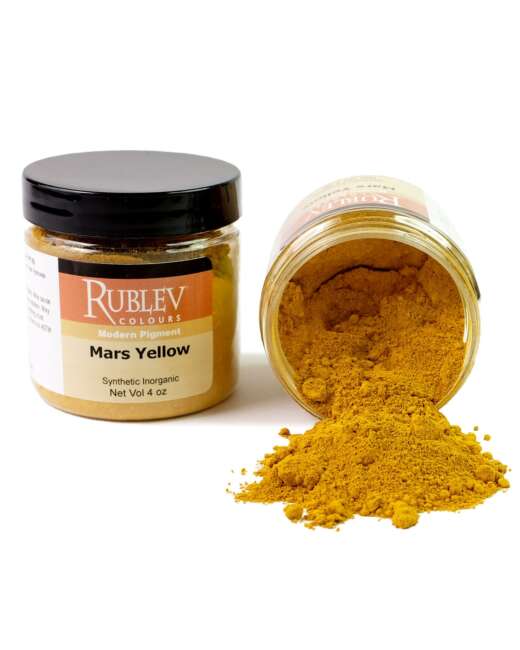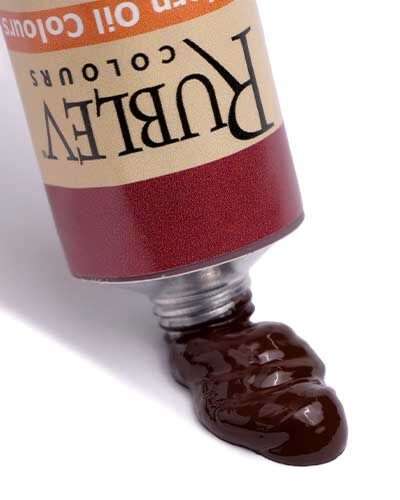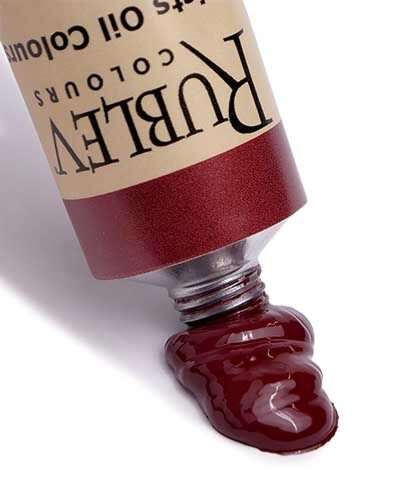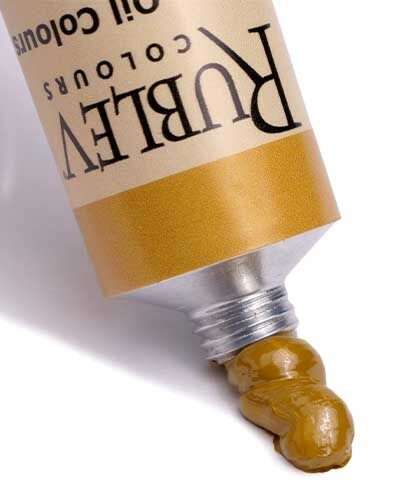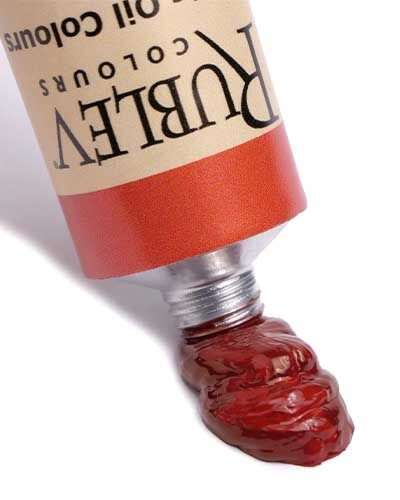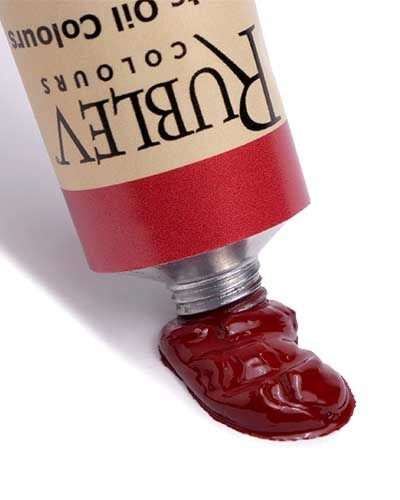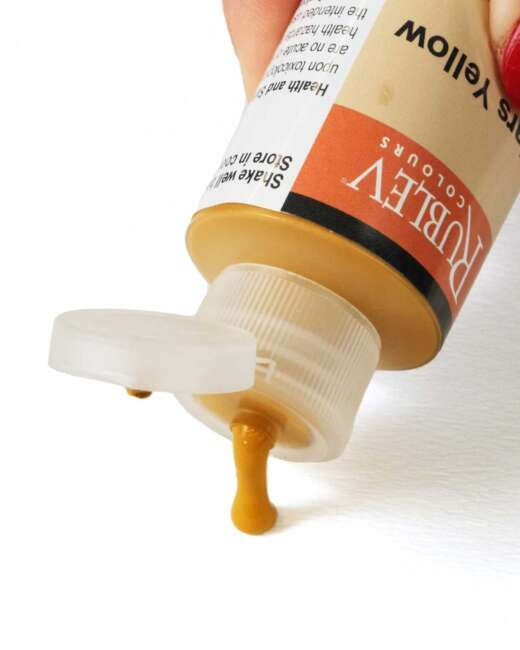Mars Is Closer Than We Think

And It Comes in More Colors Than Red
 When we think of Mars, we think of the red planet angrily growling at us in the night sky. Its earthy red color is linked to blood and the Greek god of wars. The planet appears distant and non-threatening to us. But Mars is closer than you think. And it is in more colors than red.
When we think of Mars, we think of the red planet angrily growling at us in the night sky. Its earthy red color is linked to blood and the Greek god of wars. The planet appears distant and non-threatening to us. But Mars is closer than you think. And it is in more colors than red.
Mars is a group of synthetic iron oxide colors ranging from orange-red to violet, yellow, brown, and black. The variations of the iron oxide pigments are distinguished by a color descriptor, i.e., ‘Mars red.’
How Mars Pigments Were Manufactured
The first mars pigments were manufactured by precipitating iron(II) sulfate (also called ‘green vitriol’ or ‘martial vitriol’) mixed with alum with an alkali, such as lime, caustic soda, potash, etc. The residue was then washed carefully to remove any remaining salts. Other salts of iron (iron chloride, iron nitrate, or iron acetate) were also used to manufacture the pigment. A yellow-brown pigment was produced by the precipitation of iron salts and alkali. Alum was added to iron sulfate to produce a light yellow pigment. Mars yellow was the starting material for other mars colors.
Origin of the Name of Mars Colors
The earliest mention of these pigments is by de Mayerne in his manuscript known as MS Sloane 2052. Some believe that the name originated with a brand name of artists’ paints in the late eighteenth century. They were likely uncommon during that time because the naturally occurring equivalents were widely and readily available.
The name mars are derived from the god of war, whose metal is iron. The name ’mars yellow’ and the colors derived from this name emerged in the eighteenth century as a literal translation of the Latin crocus martius (or martes crocus). Martis refers to Mars and the ancient alchemical name for iron. The pigment was also called crocus martius, with crocus referring to saffron or yellow; for example, the seventeenth-eighteenth century chemist Boerhaave has a section in his 1727 treatise on chemistry titled ‘Exhibiting the reduction of Vitriol of Iron to a Calx or Crocus; or the preparation of Crocus Martis astringens.’
In L’Arte Vetraria, Neri gives four different methods to make crocus martis. He explains:
Crocus Martis is nothing other than a refinement and calcination of iron. A means by which its pigment, that in glass is a deep rutty red, is opened and imparted to the glass. It not only manifests itself but makes all the other metallic colors as well, which ordinarily hide and are dead in the glass, dance in resplendent apparition. Since this is the way to make the hidden metallic colors appear, I have put down four ways to make it.
The earliest period that the color was made is indicated by two patent applications of 1780 and 1794 for crocus martis or saffron of mars.
Mars Yellow


Mars Yellow is one of the mars pigments developed during the eighteenth century and manufactured by the aqueous precipitation of iron salts. Mars yellow is the first pigment produced by this process, which is then further roasted to produce the other mars colors—orange, brown, red, and violet. Unlike other earlier synthetic iron oxides and oxide hydroxides, the mars colors were pure and very fine-grained while retaining high tinting strength. Mars yellow is a yellow-brown shade. It could be brightened to a pale yellow by mixing the iron sulfate raw material with alum before precipitating the iron oxide.
In his 1869 edition of George Field’s Chromatography, Salter gives Jaune de Mars, Jaune de Fer, and Iron yellow as synonyms of mars yellow, adding that it was sometimes adulterated with orpiment or lead chromate to brighten the color.
Discover Rublev Colours Mars Yellow
Rublev Colours Mars Yellow is an intense ocherous yellow oil color that makes warm yellowish tints. Mars colors are permanent pigments with good tinting strength and are good driers for oil paints. Mars yellow, originally named jaune de Mars in the eighteenth century, is a high tinting iron oxide pigment. We grind it in pale refined linseed oil and age each batch. The very fine particle size of the pigment gives this paint a thick buttery consistency that pulls long with the brushstroke.
Mars Red


Mars red was introduced as a synthetic iron oxide color during the eighteenth century. Its manufacturing process started with mars yellow and then was roasted to produce a red color of various shades from russet to deep crimson. Salter writes in Field’s Chromatography of 1869 that mars red possesses ‘the richness and depth of Indian red, it is distinguished by the russet orange hue or light red.’ In an earlier edition of Chromatography, Field describes mars red as a very permanent, artificial iron ocher.
Discover Rublev Colours Mars Reds
Mars Red Light Oil Paint is an intense russet (brownish red with yellow undertones) oil color. Mars colors are permanent pigments with good tinting strength and are good driers for oil paints. Mars Red Light is a high tinting iron oxide pigment with the brightest yellow undertones we could find in synthetic iron oxide. We grind it in pale refined linseed oil. The very fine particle size of the pigment gives this paint a thick buttery consistency that pulls long with the brushstroke.
Mars Violet


Mars Violet
Mars pigments with a violet hue were first produced by making mars yellow. This compound was then calcined and oxidized to form red shades of iron oxide(III). It is believed that the first pigments offered as mars violet were the natural mineral hematite, which is a red iron oxide earth pigment. This was then calcined and oxidized to produce deeper shades and ground more coarsely than the brighter red shades. Synthetic iron oxide pigments of deep red and violet hues are produced today by the Penniman-Zoph process. When synthetic iron oxide pigments are produced at larger particle sizes, 1–5 microns, they appear closer to violet hues of red. Smaller particle sizes, 0.1 to 0.2 microns, produce brighter yellow shades of red.
The Latin caput mortuum (meaning “dead head,” and variously spelled caput mortum or caput mortem) is the name given to a purple variety of hematite iron oxide pigment. This name may have come from alchemical usage since iron oxide is the oxidized residue (caput mortuum) or rust. It was initially a byproduct of sulfuric acid manufacture during the seventeenth and eighteenth centuries. It was possibly an early form of the copperas process used to manufacture Venetian red and copperas red.
Discover Rublev Colours Mars Violet
Rublev Colours Mars Crimson is dark bluish-red (violet) oil color that makes cold red tints. The chemical and physical properties are similar to natural iron oxide earth pigments. We grind it in pale refined linseed oil with a small amount of bodied linseed oil to prevent it from becoming matte upon drying. The bodied oil, however, gives it some tackiness and drags under the brush. This can be easily remedied by adding a small amount of linseed oil or Oleogel to the paint on your palette.



